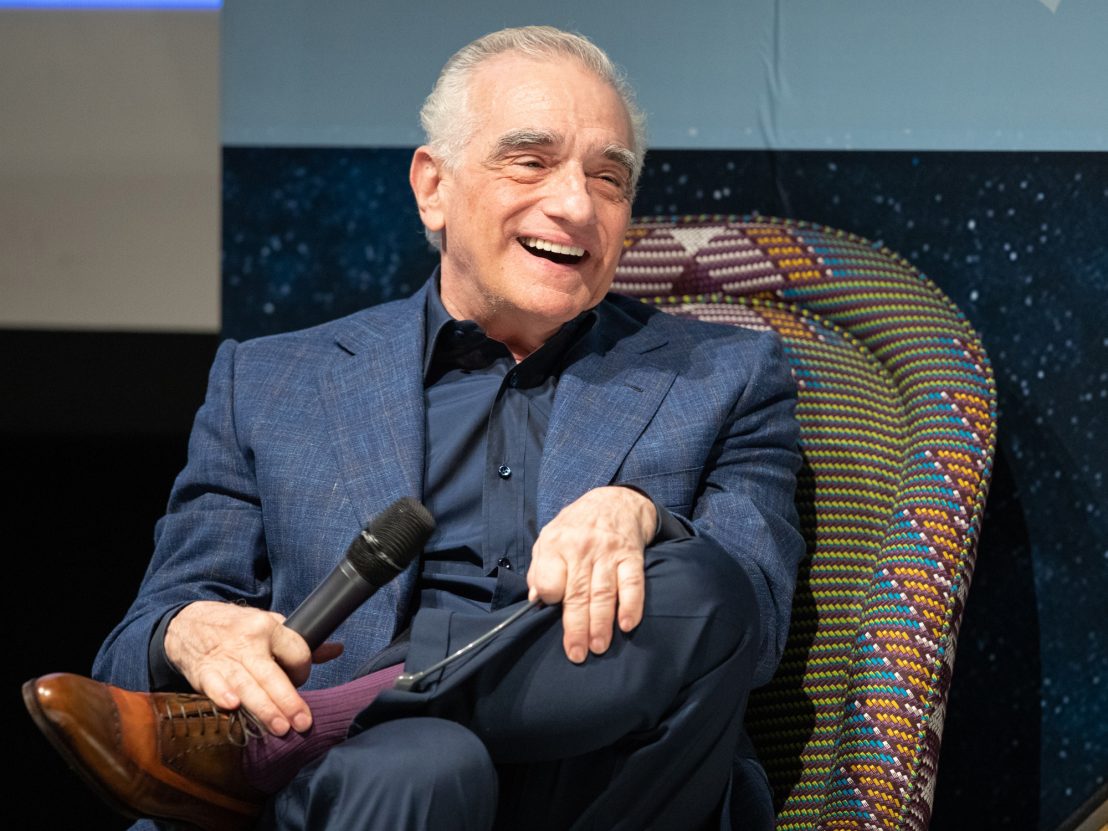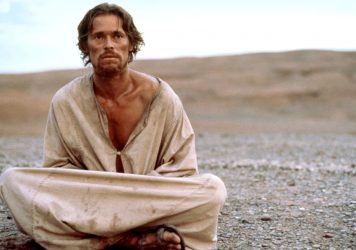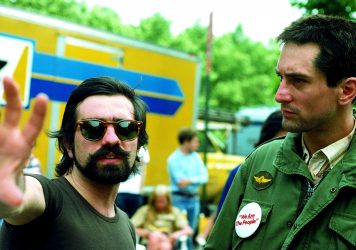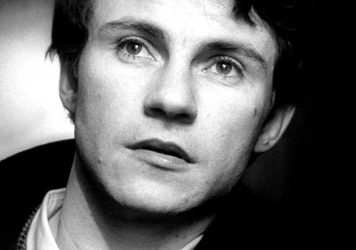
At a recent masterclass in Marrakech, the legendary American director expressed concerns over where the industry is heading.
While the rest of us patiently await news of The Irishman’s release, Martin Scorsese is busy reflecting on the past, present and future of cinema. Speaking at the Marrakech International Film Festival, the American director recalled his fondest – and least favourite – memories of a five-decade career, as well as his hopes and fears for what’s next for filmmakers, audiences and critics.
“At the age of three I was diagnosed with severe asthma, and my parents didn’t quite know what to do with me, so they took me to the movies. I couldn’t play sports, I couldn’t run, I couldn’t laugh too much because of the spasms, and we were working class people who didn’t have books in the house, so everything was visual. My family – my parents, my grandparents, many aunts and uncles – were from the old world in Sicily, and we had lots of great storytellers.
“In 1949 my father was able to get a 16-inch TV. There was a local channel in New York just for Italians, and every Friday night they showed Italian cinema with subtitles. And my parents and my grandparents would come and watch this little TV. I was five years old, and the reaction of the family to the images and the conflict and the suffering in Paisan, was something that never left me. I’d go see Duel in the Sun and the great westerns, or the film noirs – which were, by the way, not film noirs, they were just the regular movies – that reflected the darkness of the post-World War Two American cinema.
“By the time La Strada came out in 1952, Italian cinema just seemed natural to me. But my father also took me to see The Red Shoes in 1950, and that’s stuck with me for many years. That sense of obsession, and art possessing the artist, and the idea of destroying yourself through art because you love so much. I had never seen silent films at that time because they hadn”t been restored and they look terrible – I couldn’t appreciate Chaplin at all. Then the film Jean Renoir made in India, Le Flueve, really stuck with me too. The beauty of life, the way life ebbs and flows.
“At 14, the key American films that hit me were On the Waterfront and East of Eden. It was really Elia Kazan – we couldn’t afford to go to the theatre and see the plays by Tennesse Williams or Arthur Miller, but On the Waterfront and East of Eden had that New York theatrical acting style, that didn’t feel like acting. When I watched On the Waterfront, I felt like there were people up on the screen that I knew. Myself, my brother… even the movie I’m making now is about two brothers. It’s the same movie for the past 40 years.”
“All the people that liked my movies back in the ’70s were from New York – even the ones in LA, they weren’t Californians, they were New Yorkers. I went out there, and Roger Corman and Francis Coppola helped, but I was lucky to have somebody in a studio position who liked my style, or who liked what the style could be. I was lucky too to have a close relationship with De Niro, which was complicated and strong.
“During that period, one of the key things a director had to look out for – and it’s still the case to a certain extent – was losing the film completely. Brian DePalma, George Lucas and me were all sitting there in LA one day, and the actor and the studio had taken away Brian’s new film, Get to Know Your Rabbit. It may not have been one of his best, but they did not let him continue working on it, it was taken away from him. George’s THX 1138 was being threatened, and I couldn’t get a picture made, I was still working as an editor. What we learned right away was that the power takes the film, and if the actor has the power, that’s Hollywood.
“I always shied away from big names because I didn’t know if they’d go where I wanna go, but DeNiro and I.. .he just wasn’t afraid. His power at the time was pretty good too. I don’t mean he could have gone into Columbia Pictures and argued with them when they all hated Taxi Driver, which they did – they hated it. That film was really saved by the producers, Michael and Julia Phillips, who negotiated and made sure it got made. Taxi Driver was the big battle.”
“I edited Mean Streets myself, but I couldn’t take the credit because I wasn’t in the union. I gave the credit to Sid Levin, a great editor – he edited all of Martin Ritt’s films. He took the credit, he was very nice. And then he got a bad review in Variety – they said the editing was choppy. I’m sorry, Sid!
“I worked on Woodstock for a while, but I was taken off the picture. Back then you were constantly fighting the establishment, and it got to the point where you’d steal the negative to stop the studio destroying it. With Taxi Driver that’s the point I was at. I felt helpless. I was furious, and it was not the way to be politic. The studio made us recut it, they said, ‘Either you recut it or we will’.”
“Critical evaluation has been decimated. There isn’t any. You can have cinema study, cinema dialogue with people, but it’s rarified. There aren’t many more reviews. There’s no more criticism. The criticism I grew up with just isn’t there anymore. I remember the time I felt the heaviest impact that a critic had on cinema – it was 1980, I’d just made Raging Bull. We opened 10 days before Michael Cimino’s Heaven’s Gate, and that film closed after one day due to a review in The New York Times by Vincent Canby. That ended the American auteur. We have thought pieces now, which might be very good, but it’s not the same.”
“Could you make the movies I made then, like Mean Streets and Taxi Driver, today? You could. The equipment is beyond the camera we were using back then. You have one problem: you can’t see them. I don’t know what to say about distribution. George Lucas said this five, 10 years ago – we’re in a dark age, and we don’t know what formats are going to exist in the future. We don’t know how we’re gonna migrate these damn films. If we’re gonna migrate them. After all this time, the only thing that really preserves a film is celluloid.
“We’re in a second industrial revolution, and I have no idea how the future is going to shape up in terms of visual storytelling to an audience, in a room, with people watching one screen. I know that it’s essential, and we have to fight to keep theatres open as much as possible, because it’s a communal experience, whether it’s a [Abbas] Kiarostami or one of those theme park movies where people are running around and banging and crashing. I know the audience is there for something that could enrich your life forever, and the problem is we may not know what new developments there will be.
“I watch a lot of films at home – I don’t go out very much – but on big screens, with people with me. I miss the audience experience. Now we’re discussing the value of art, and everyone talks about ‘content’. Netflix financed my new film. They’re taking a risk on this movie. No one else wanted to, for like five, six years. You can make anything now. The problem is, how do people see it, how will people experience it? I’m not sure what the answer is anymore.”
Published 3 Dec 2018

An incredible video essay looks at divine presence in the work of this American master.

A comprehensive guide to the directing credits of this great American auteur, from Mean Streets to The King of Comedy to Killers of the Flower Moon.

By Mark Allison
It’s 50 years since the director announced his arrival as a major new force in American cinema.